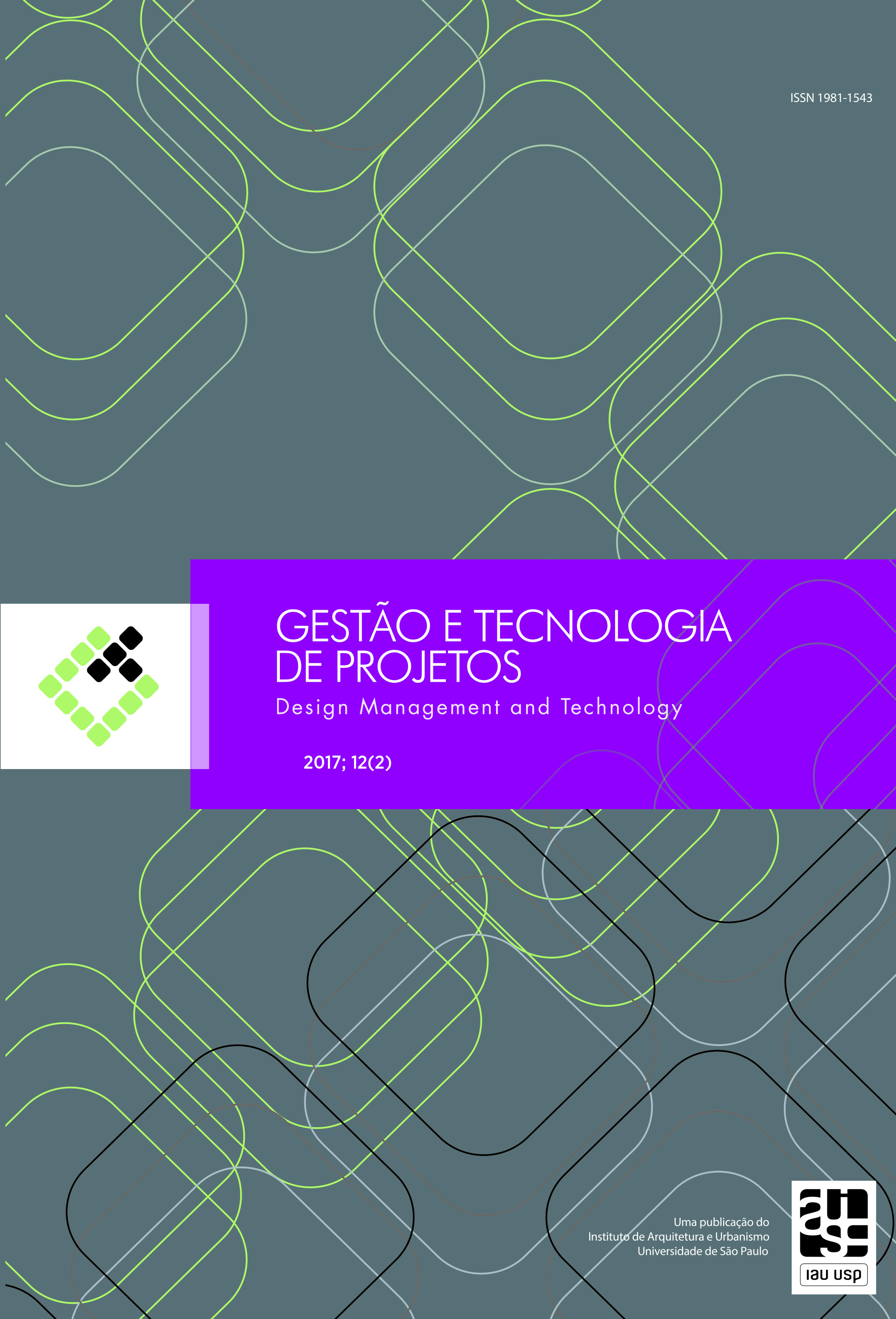PALLETS, A LIFE CYCLE ANALYSIS: A STUDY TO DEMONSTRATE THE IMPORTANCE OF DESIGN TO SUSTAINABILITY
DOI:
https://doi.org/10.11606/gtp.v12i2.110234Keywords:
Management Shared, Sustainability, DesignAbstract
This article aims to demonstrate the importance of Transversal Design for sustainability, linking different areas of knowledge with relevant issues and complex problems (wicked problems) – such as consume and production system, sustainability, management of people and processes, technology, information overload, relationship man and object, culture, identity, among others – that permeate the current fluid and constantly changing scenario. The resolution of complex and wicked problems should not be understood as a responsibility only of political actors, new networks must be created between individuals, businesses and public authorities associating creativity and entrepreneurship to generate shared values and potential solutions for sustainability. Shared management problems will be discussed through a descriptive methodology case study in two different communities with similar purposes. The communities of Jeceaba and Jardim Canada (Nova Lima, Minas Gerais, Brazil), reusing waste (pallets) discarded from furniture and adornments production, in order to minimize environmental impacts, but one applies the design methodology in the creative process and implementation of parts while the other doesn’t have methodology in respect to local restrictions. The analysis of these studies leads to understanding the importance of design to produce economically efficient, socially just and environmentally sustainable projects.
Downloads
References
AZEVEDO, P. K. U. et al. Design thinking: uma nova fonte de pensar. Quipus, Natal, v. 2, n. 2, p. 41-48, jun./nov. 2013. Disponível em:<https://goo.gl/qJNC8x>. Acesso em: 4 maio 2015.
BAUMAN, Zygmunt. Modernita liquida.Roma/Bari:Editori Laterza & Figli,2002.
BRANZI, Andrea. Modernita debole a diffusa:il mondo del progetto all'inizio del XXI secolo.Milano: Ed. Skira,2006.
BROWN, T. Design thinking: uma metodologia poderosa para decretar o fim das velhas ideias. Tradução de Cristina Yamagami. Rio de Janeiro: Alta Books, 2010. 249p.
CATARSE. Disponível em: <https://www.catarse.me/pt>. Acesso em: 20 nov. 2015.
CELASCHI, Flaviano. II design dellamforma merce:valori, bisogni e merceologia contemporanea.Milano: Ed. II Sole 24 Ore/POLIdesign,2000.
CHEHEBE, J. R. Análise do ciclo de vida de produtos: ferramenta gerencial da ISO 14000. Rio de Janeiro: Qualitymark, 1997.
DESIS; BACKGROUND, in MORAES,Dijon. Metaprojeto: o design do design. São Paulo: Blucher,2010.
GUARNIERI, P. Logística reversa: em busca do equilíbrio econômico e ambiental. Recife: Clube de Autores, 2011. 307p. Disponível em: <https://goo.gl/im6SXz>. Acesso em: 5 dez. 2015.
HADDAD, P. R. Economia peregrina. Cidade: Phorum Consultoria, 2015.
INSTITUTO BRASILEIRO DE GEOGRAFIA E ESTATÍSTICA. Censo 2010. 2011. Disponível em: <https://goo.gl/o4fr7W>. Acesso em: 12 jun. 2015.
JARDIM Canadá Centro de Arte e Tecnologia. Disponível em: <http://www.jaca.center/sobre//>. Acesso em: 20 out. 2015.
KOTLER, P.; ARMSTRONG, G. Princípios de marketing. 12. ed. Traduzido por Arlete Simille Marques, Sabrina Cairo; revisão técnica Dílson Gabriel dos Santos, Francisco J. S. M. Nova Jersey: Prentice Hall, 2008.
LÖBACH, B. Design industrial: bases para a configuração dos produtos industriais. São Paulo: Blucher, 2006.
MANZINI, E.; VEZZOLI, C. O desenvolvimento de produtos sustentáveis: os requisitos ambientais dos produtos industriais. São Paulo: Universidade de São Paulo, 2005.
MERONI, A. (Org.). Creative communities: people inventing sustainable ways of living. Milan: Polidesign, 2007.
MORAES, D. Metaprojeto: o design do design. São Paulo: Blucher, 2010.
VIALLI, A. Upcycling, a nova fronteira da reciclagem. Estadão, São Paulo, 26 abr. 2010. Disponível em: <https://goo.gl/FxAHoA>. Acesso em: 1 jun. 2013.
VIANNA, M. et al. Design Thinking: inovação em negócios. Londres: MJV Press, 2012. 162p.
Downloads
Published
Issue
Section
License
Copyright Notice
Authors who publish in this journal agree to the following terms:
- Authors retain the copyright and grant the journal the right of first publication, with the article simultaneously licensed under the Creative Commons Attribution License BY NC ND, which allows the sharing of article with acknowledgment of authorship and initial publication in this journal.
- Authors are authorized to take additional contracts separately, for non-exclusive distribution of version of the article published in this journal (e.g. publish in institutional repository or as a book chapter), with acknowledgment of authorship and initial publication in this journal.
- Authors are allowed and encouraged to publish and distribute their research work online (e.g. in institutional repositories or on their personal page) at any point before or during the editorial process, as this can generate productive changes, as well as increase the impact and the citation of published article (See O Efeito do Acesso Livre).



